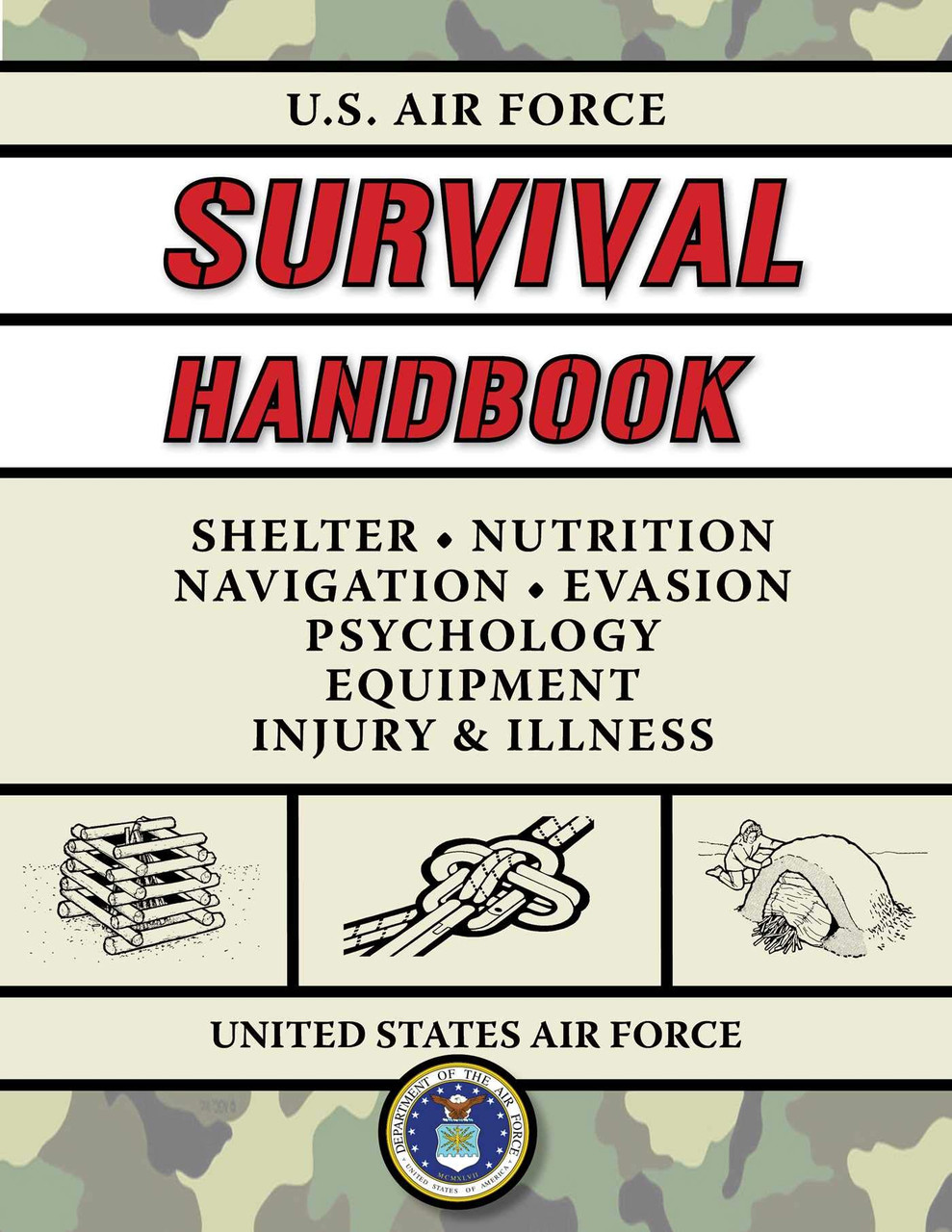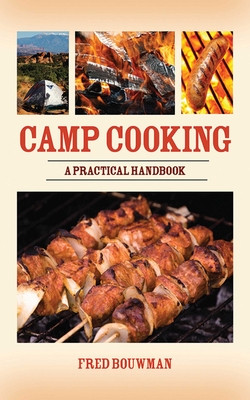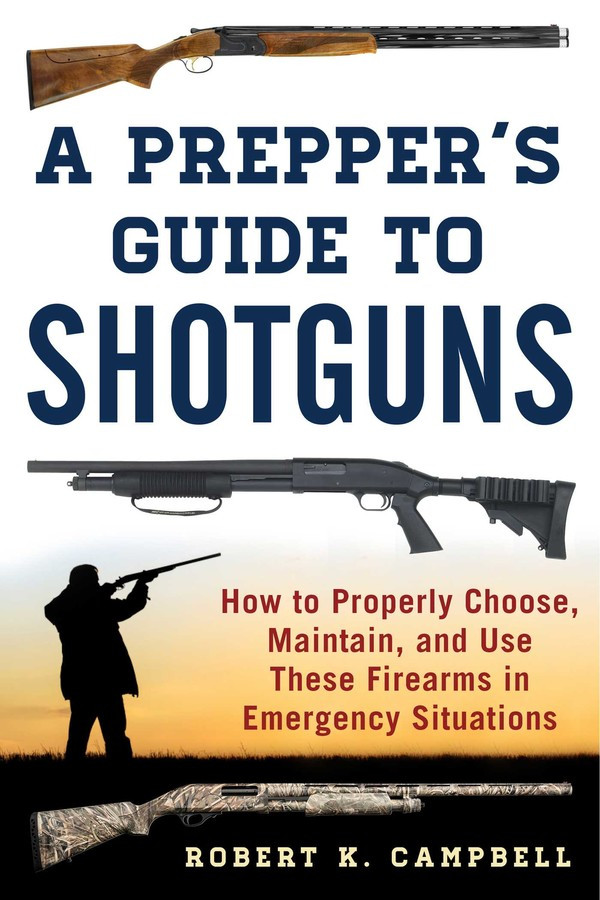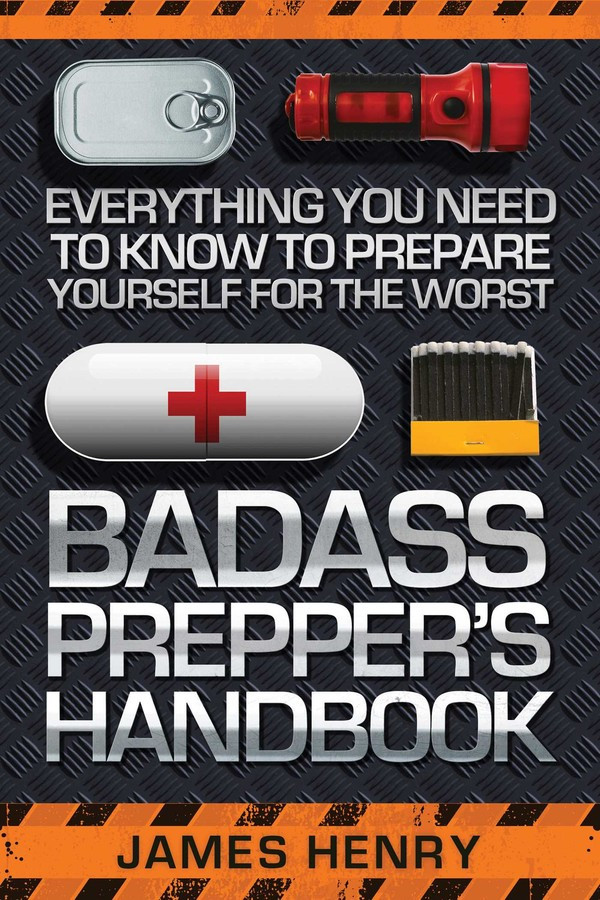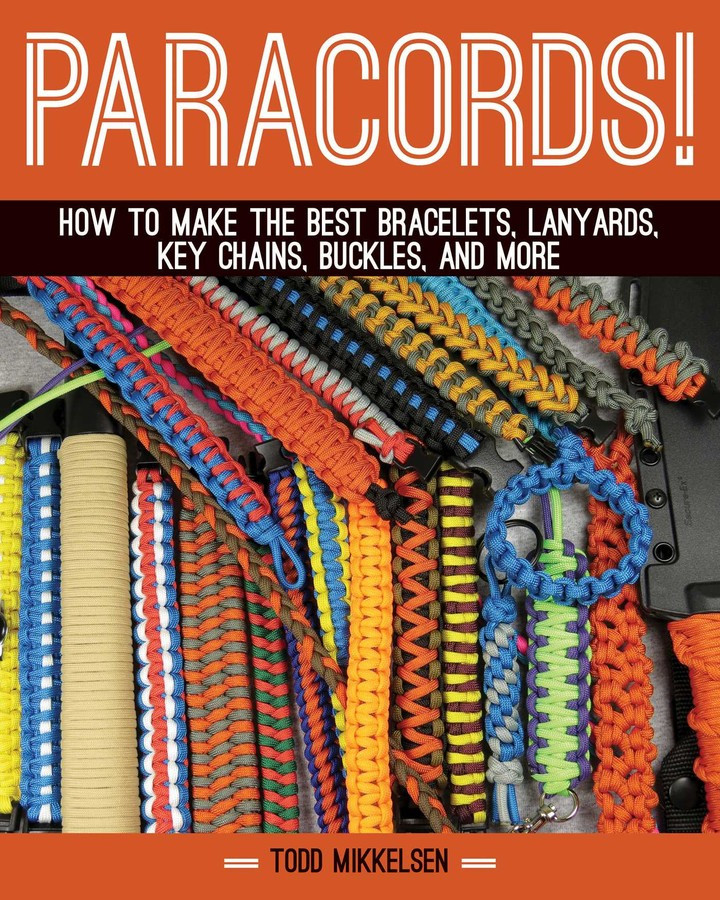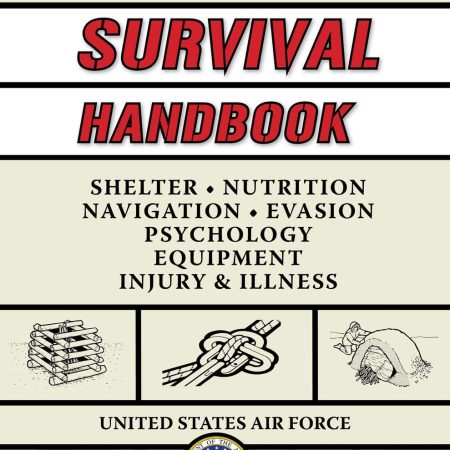| Content | Here is the Official US Air Force guide to staying alive in survival situations—first aid, concealment, survival at sea, building shelter, finding food and water, and more!
This Air Force handbook was written to help pilots who find themselves in hostile environments. While it is designed for use in formal Air Force training, it is also useful for the general reader seeking a comprehensive and complete manual of outdoor survival techniques. Any US Army survival kit would also benefit from this handbook.
Among other pieces of professional and expert advice, the US Air Force Survival Handbook tells readers about:
- Finding your way without a map
- First aid for illness and injury
- Finding food and water
- Building a fire
- Concealment techniques
- Using ropes and tying knots
- Survival at sea
- Signaling for help
- Animal tracking
- Predicting the weather
- Building shelters
Released on the 70th anniversary of the US Air Force, this book outlines specific survival threats found in many different types of terrain and how to survive them. It is invaluable to all who enjoy the outdoors and anyone who seeks insight into the training tactics of the US Air Force.
| Camp Cooking covers it all: from meat, to fish, to vegetables, baked goods and sauces. Fred Bouwman explains it all in easy-to-follow steps. This information has been tested and retested in the field. Much of it is just not available anywhere else and Bouwman lets his expertise run wild here. Chapters include information on building campfires that are serviceable for cooking, selecting the best camp stove, utensils, and how to pack and carry a camp "kitchen." Bouwman also looks at the myths and the facts of safe water purification while camping, and teaches methods for safely purifying your water supply. The book closes with a great section on selecting using the wide selection of foods available to today's camper.
| In the chaos of a survival situation, firearms will be important tools for protecting yourself, your family, and your supplies as well as for hunting animals for food. In A Prepper’s Guide to Shotguns, Robert K. Campbell discusses the best shotguns to have with you in any confrontation—including the end of the world as we know it. Shotguns that are easy to carry and lightweight and that shoot accurately and reliably at close ranges are ideal candidates for personal protection. In A Prepper’s Guide to Shotguns, Campbell explores specific shotguns that are appropriate for urban, rural, and suburban environments, with tips on how to use them in each context. Whether at home or in a survival scenario, these shotguns are the best for defense. A Prepper’s Guide to Shotguns not only reviews the specific features of defensive shotguns but how to use them—whether on the move, in a defensive situation, while retreating, or in other circumstances. Campbell also offers expert tips on how to improve your marksmanship, how to maintain your firearms, crucial gun safety rules, what ammo and optics to purchase, and more. | Disaster can strike at any time with no warning. Most people aren’t forward-thinking enough to prepare for the worst, and others simply don’t have the skills needed to successfully prepare. That’s where Badass Preppers Handbook comes in. Covering a wide variety of disaster scenarios with detailed instructions for what you need to do in each one, this book will help you to be ready for anything in no time at all. Learn such things as:
How to fortify your home
How to preserve and store food and water for years
What should go in your bug-out” bag
How to cook off the grid
What firearms and ammo will best help you survive the apocalypse
And more!
With this ultimate guide in disaster survival, you’ll be ready to protect yourself, your family, your neighbors, and your pets, no matter what the disaster is.
| As consumerism and a meat-heavy, processed diet become the norm and the world's population continues to grow at an exponential rate, more and more people are looking toward a more sustainable path for food. Authors Douglas Boudreau and Mykel Hawke believe that the future of food lies in the wild foods of times spanning back to before the mass-agriculture system of today.
People have become distanced from the very systems that provide their food, and younger generations are increasingly unable to identify even the trees in their backyards. In response, Boudreau and Hawke have provided a compendium of wild edible plants in North America. Foraging for Survival is a comprehensive breakdown of different plant species from bearded lichen to taro, and from all over the United States. There are also tips for growing local native plants in the backyard to facilitate learning and enhance table fare at home. Other information you'll find inside:
- A list of different types of edible wild plants
- Foraging techniques
- Bugs and other grubs that can be consumed
- Warning signs of poisonous plants
- And much more!
Whether you're a hiker taking a walk through your local wilderness, or chef looking for new ingredients to incorporate in your dishes, Foraging for Survival is the book for you!
| In Paracord!, you'll find step-by-step instructions to take you through every project. Each step is accompanied by a color photo that clearly illustrates the process.
Todd Mikkelsen's Paracord! offers a diverse collection of projects that utilize parachute cords—known around the world as paracord. Used by paratroopers and other military personnel during World War II, this lightweight nylon rope is now one of the most sought-after materials by crafters. Its durability and flexibility make it perfect for creating everyday accessories such as belts, bracelets, buckles, necklaces, dog leashes and collars, key chains, and more. Projects include:
Two-Color Solomon Bar Bracelet
Shark Jaw Bone Bracelit
Locked Half Hitch Bracelet
West Country Whipping Inverted Bracelet
Genoese Quick Deploy Strap
Zipper Quick Deploy Sinnet
Three-VBord Braid Necklace with Breakaway Clasmps
ID Lanyard
And many more.
As you will see, this rope comes in various colors, from army green to hot pink, making it easy to personalize every type of project. Mikkelsen includes introductory chapters preparing your paracord for crafting, tying different types of knots, and caring for and cleaning your completed paracord projects.
|
